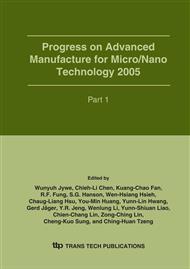p.877
p.883
p.889
p.895
p.901
p.907
p.913
p.919
p.925
Effects of Human Factors on Performance of Advanced Manufacturing Technology: An Empirical Examination
Abstract:
To be successful in this globally competitive and rapidly changing situation, organizational changes, which must be consistent with the implementation of manufacturing technology, are required. This study proposes that human factors in the organization have improved the implementation effects of AMT. Based on a brief review of relevant literatures, three categories including twelve indicators are concluded as valid and reliable measures of the implementation effects of AMT. Using the result from a survey of 87 equipment manufacturing firms in the northeast of China, a stepwise regression analysis is conducted to investigate the diversity influence on AMT implementation by human factors. The results show that training, equitable reward and team cooperation have positive effect on operational performance; equitable reward, empowerment and team cooperation are positively correlated with organizational and managerial performance; the relationship between team cooperation and competitive performance is significant and positive.
Info:
Periodical:
Pages:
901-906
Citation:
Online since:
January 2006
Authors:
Price:
Сopyright:
© 2006 Trans Tech Publications Ltd. All Rights Reserved
Share:
Citation:


